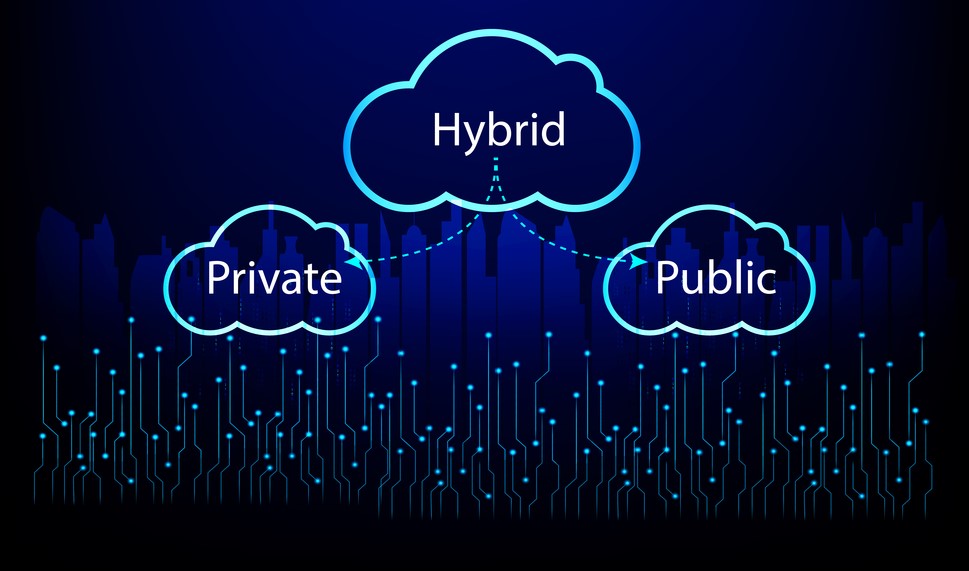
In the rapidly evolving landscape of enterprise IT, a significant shift is underway. The traditional approach of relying on centralized cloud computing is being challenged by a new paradigm known as the Local-First Software movement. This movement is gaining traction for its potential to enhance data control, security, and resilience within enterprise systems. In this article, we’ll explore the Local-First Software revolution and make a compelling case for data localization in enterprise IT.
The Rise of Edge Computing
One of the central elements of this revolution is the rise of edge computing. Edge computing refers to the practice of processing data closer to the source, at the “edge” of the network, rather than relying solely on remote data centers. This approach has gained prominence due to the need for faster data processing, reduced latency, and improved reliability in various applications, including IoT devices and real-time analytics.
Local-First Software aligns seamlessly with the principles of edge computing by keeping data and functionality as close to the user’s device as possible. This approach ensures that data can be processed locally, leading to faster response times and a more responsive user experience, even in situations with limited or intermittent network connectivity.
See also: How Edge Computing is Transforming Data Analysis in the Cloud
Benefits of Local-First Software for Enterprises
Deciding to take the local first software approach could bring several significant benefits to enterprises:
Data Control and Security
One of the primary advantages is the enhanced control and security over data. In Local-First applications, user data is stored and processed locally on their devices, putting them in charge of their data’s fate. This approach minimizes the risk of data breaches and unauthorized access, a top priority for today’s enterprises.
Resilience and Reliability
Local-First Software solutions are designed to function independently on users’ devices. This means that even when faced with network outages or server failures, the software can continue to operate. This resilience and reliability are crucial for enterprises that rely on uninterrupted access to critical applications and data.
Local-First vs. Cloud-First: Making the case (gently) for local-first
In the ever-evolving world of IT strategies, two prominent approaches have emerged: Local-First and Cloud-First. These approaches offer distinct philosophies for data management and software design. Here’s a concise comparative overview of both:
Local-First Approach
- Data Control and Security: Prioritizes user data control and security by storing it on the user’s device or within the enterprise’s network.
- Resilience and Reliability: Designed for resilience, ensuring operational continuity even during network or server outages.
- Data Localization Compliance: Ideal for meeting data sovereignty regulations and industry-specific compliance requirements.
- Improved Data Privacy: Reduces data exposure, minimizing the risk of data breaches.
Cloud-First Approach
- Scalability and Accessibility: Offers scalability and remote access to data and applications, making it suitable for global operations.
- Cost Efficiency: Often involves cost-effective, pay-as-you-go pricing models.
- Automatic Updates and Maintenance: Cloud providers handle updates and maintenance, enhancing system stability and security.
- Global Reach: Provides low-latency access to users worldwide.
Considerations for Enterprises
- Data Sensitivity: Evaluate the sensitivity of your data to determine the most suitable approach.
- Resilience Requirements: Consider your application’s resilience needs; Local-First offers offline capabilities.
- Compliance Obligations: Assess compliance obligations; certain industries or regions may require data localization.
- Scalability and Global Reach: Analyze scalability and global accessibility requirements.
- Cost Considerations: Factor in long-term costs and vendor lock-in when assessing cost efficiency.
The choice between Local-First and Cloud-First hinges on specific enterprise needs, objectives, and regulatory constraints. Each approach offers unique advantages, and the decision should align with your organization’s goals and priorities.
See also: Nailing AI from Cloud to the Edge
Local-First: An Alternative to Cloud Challenges
Local-First software offers an alternative to the conveniences of the cloud while addressing privacy, security, and software quality concerns. Unlike the cloud, which relies on remote servers, Local-First operates primarily on users’ devices, prioritizing efficiency, privacy, and tailored experiences. It aims to replicate the cloud’s advantages, like ubiquity, sync, and collaboration, but without its drawbacks, making it a compelling choice for users who value data control and security.
The cloud, often perceived as a nebulous space, consists of other people’s computers, raising concerns about data vulnerability and control. Even well-intentioned cloud providers face threats like hacking and data breaches. Despite these challenges, cloud computing offers seamless convenience, exemplified by real-time collaboration tools like Google Docs. In contrast, Local-First software strives to keep everything on users’ devices, enhancing data control and app speed. Although transitioning entirely to Local-First can be challenging given the industry’s cloud-centric evolution, it represents an innovative approach to software design, challenging the status quo. While users often choose software based on availability and requirements, considering Local-First as an option is a step towards greater control and security in the digital realm.
The Seven Ideals of the Local-First Hardware Movement
In Martin Kleppmann’s influential white paper titled “Local-First Software: The Challenges of Going Offline First,” he outlines seven fundamental ideals that underpin the Local-First Hardware movement. This white paper, co-authored by Kleppmann and a group of open-source developers at Ink & Switch, served as a foundational document for the Local-First Software movement and has since sparked a revolution in how we approach data management and software design.
1. Primary Copy on User’s Device: The primary copy of user data should reside on the user’s device, ensuring that users have direct control over their data. This ideal addresses the core principle of data sovereignty and empowers individuals to maintain ownership of their digital assets.
2. Offline Functionality: Local-First Software should operate seamlessly even when offline, allowing users to work without relying on a constant internet connection. This ideal recognizes the importance of uninterrupted productivity and accessibility.
3. Synchronization: Robust synchronization mechanisms should be in place to reconcile changes made on multiple devices, ensuring data consistency. Synchronization is a fundamental aspect of Local-First Software, enabling collaboration across devices.
4. Cross-Device Collaboration: Users should have the flexibility to collaborate across multiple devices without dependence on a central server. This ideal encourages a distributed and decentralized approach to collaboration, fostering greater user autonomy.
5. Privacy by Design: Local-First Software should prioritize user privacy by minimizing data exposure and ensuring that sensitive data remains on the user’s device. This commitment to privacy aligns with the growing emphasis on data protection and user rights.
6. Data Ownership: Users should retain ownership of their data, with the ability to move or delete it as they see fit. Data ownership is a foundational concept in Local-First Software, granting users control over their digital footprint.
7. User Empowerment: Local-First Software should empower users to control their digital assets and make informed choices about data sharing and access. This ideal emphasizes user agency and participation in the data management process.
Kleppmann’s white paper not only articulates these ideals but also provides insights into the technical challenges and solutions required to realize them. It has become a guiding light for developers, enterprises, and innovators seeking to embrace the Local-First Hardware movement, transforming how we think about data, software, and user-centric computing.
The principles outlined in this white paper have reshaped the landscape of enterprise IT, offering a data management vision that prioritizes user control, security, and resilience while adapting to the evolving demands of the digital age.
Implementation Strategies for Local-First Software
As enterprises consider adopting Local-First Software principles, it’s crucial to outline practical strategies for implementation:
- Assess Current Infrastructure: Begin by assessing your IT infrastructure and identifying areas where Local-First principles can be applied. Determine which applications and data sets can benefit the most from data localization.
- Select Appropriate Local-First Tools: Explore the Local-First Software tools and solutions available in the market. Choose those that align with your enterprise’s specific needs and objectives.
- Transition Gradually: Adopting Local-First Software doesn’t have to be an all-or-nothing endeavor. Consider a gradual transition, starting with less critical applications to gain experience and confidence in the approach.
Challenges and Considerations
While Local-First Software offers numerous benefits, it’s not without its challenges. Mitigating these challenges may require careful planning, investment in appropriate tools and infrastructure, and a commitment to ongoing training and support for IT teams:
- Synchronization Complexity: Synchronizing data across multiple devices in a Local-First system can be complex, especially when dealing with offline access and concurrent edits. Ensuring that changes made on one device seamlessly propagate to others without conflicts is a significant technical challenge.
- Performance: Local-First software may not be as fast at synchronization and collaboration as cloud-based counterparts. Achieving the same level of real-time collaboration and responsiveness can be difficult without relying on centralized cloud servers.
- User Adoption: Users have become accustomed to the convenience of cloud-based applications that offer seamless access from anywhere with an internet connection. Convincing users to adopt Local-First alternatives that may not provide the same level of convenience can be a hurdle.
- Development Ecosystem: The software development ecosystem has largely evolved around cloud-centric technologies and practices. Shifting towards a Local-First approach may require developers to relearn and adapt their skills, tools, and workflows.
- Cross-Platform Compatibility: Ensuring Local-First software works seamlessly across different operating systems and devices can be challenging. Designing apps that look and behave consistently across platforms adds complexity to development.
- Data Backup and Recovery: In a Local-First model, users are responsible for their data’s backup and recovery. This can be a significant burden, as many users rely on cloud providers for automatic backups and easy recovery options.
- Network Effects: Popular cloud-based platforms have established network effects, where the value of the service increases as more users join. Moving away from these platforms to Local-First solutions can be challenging due to the inertia created by these network effects.
- Regulatory Compliance: Depending on the region and industry, there may be regulations that require data to be stored in specific locations or with certain security measures. Achieving compliance with these regulations in a Local-First model can be complex.
- Limited Collaboration Features: While Local-First software aims to provide collaborative features, it may not offer the same breadth of real-time collaboration tools and integrations that cloud-based services provide.
- Educational Hurdles: Informing users about the advantages and disadvantages of Local-First versus cloud-based software and guiding them through the transition can be an educational challenge.
Despite these challenges, the Local-First software movement continues to gain traction, driven by the desire for greater data control, privacy, and security. As technology advances and developers address these challenges, Local-First solutions may become more accessible and appealing to a broader audience.
Prioritizing data control and resilience
The Local-First Software movement represents a significant shift in enterprise IT. By prioritizing data control, security, and resilience, it offers a compelling alternative to traditional cloud-centric models. As edge computing gains prominence, enterprises can explore Local-First Software solutions to enhance their data management practices and better align with evolving industry regulations.
In an era where data privacy and security are paramount, Local-First Software offers a different path forward, empowering enterprises to take control of their digital assets while ensuring the resilience and reliability of their IT systems. As we continue to navigate the evolving landscape of technology, it’s worth considering how the Local-First Software revolution can shape the future of enterprise IT.

Elizabeth Wallace is a Nashville-based freelance writer with a soft spot for data science and AI and a background in linguistics. She spent 13 years teaching language in higher ed and now helps startups and other organizations explain – clearly – what it is they do.


